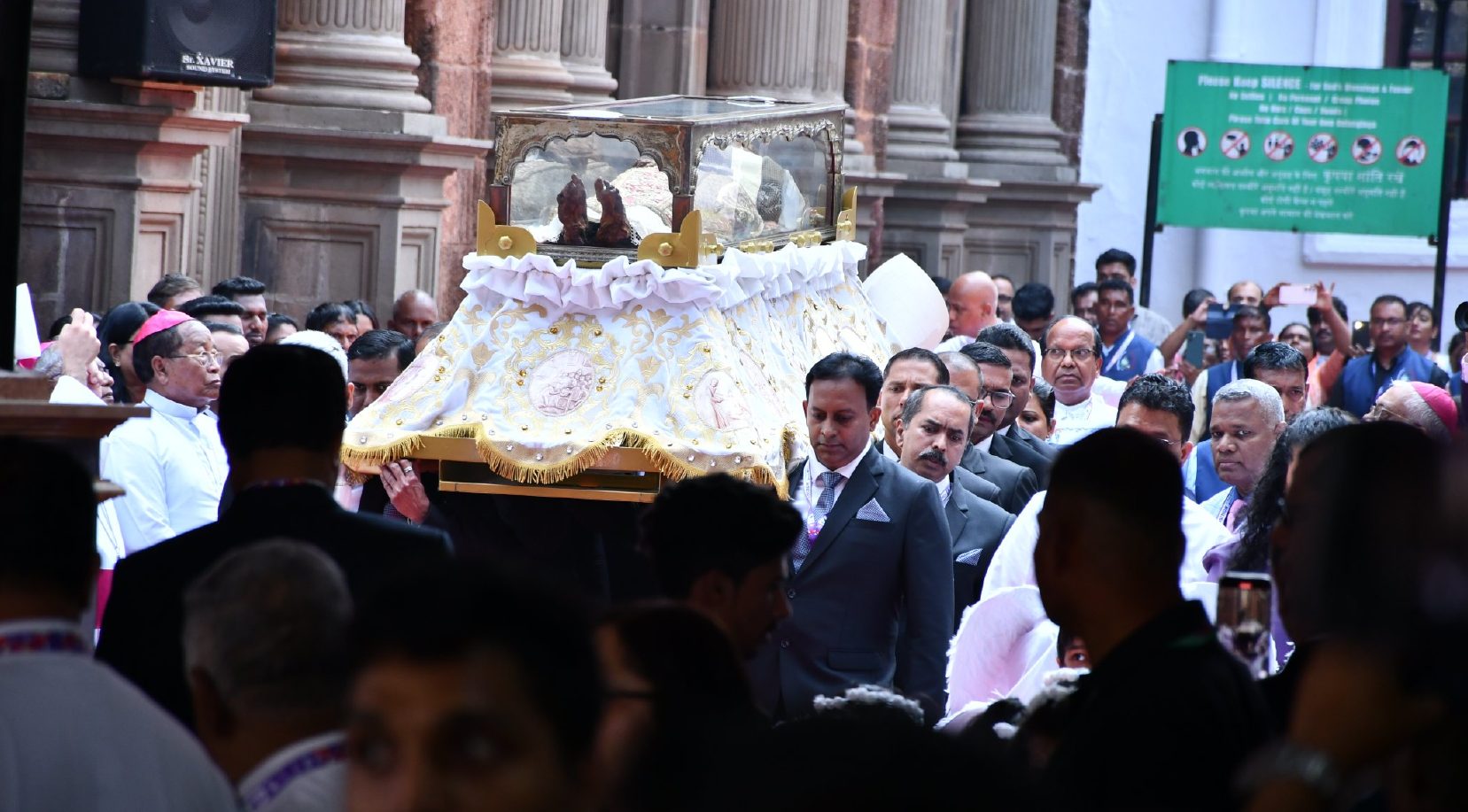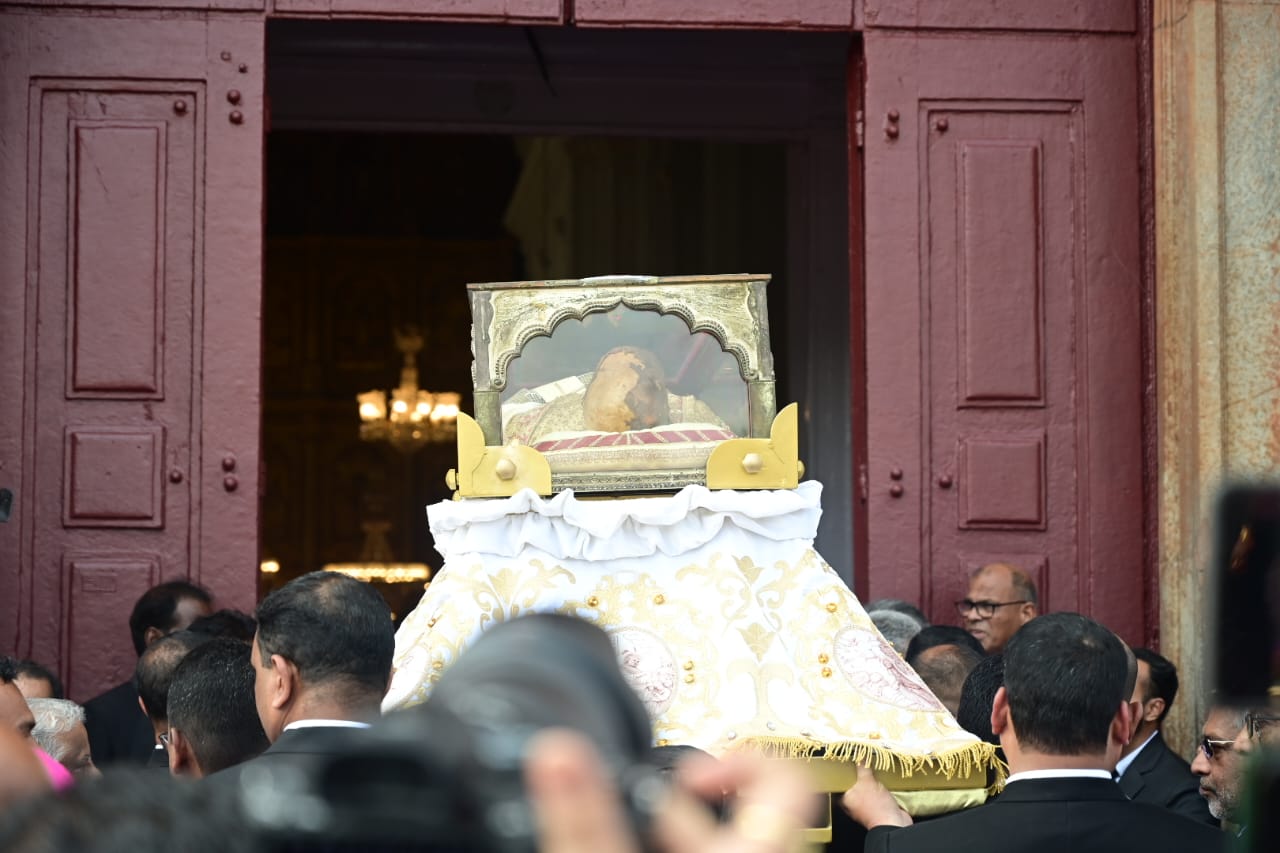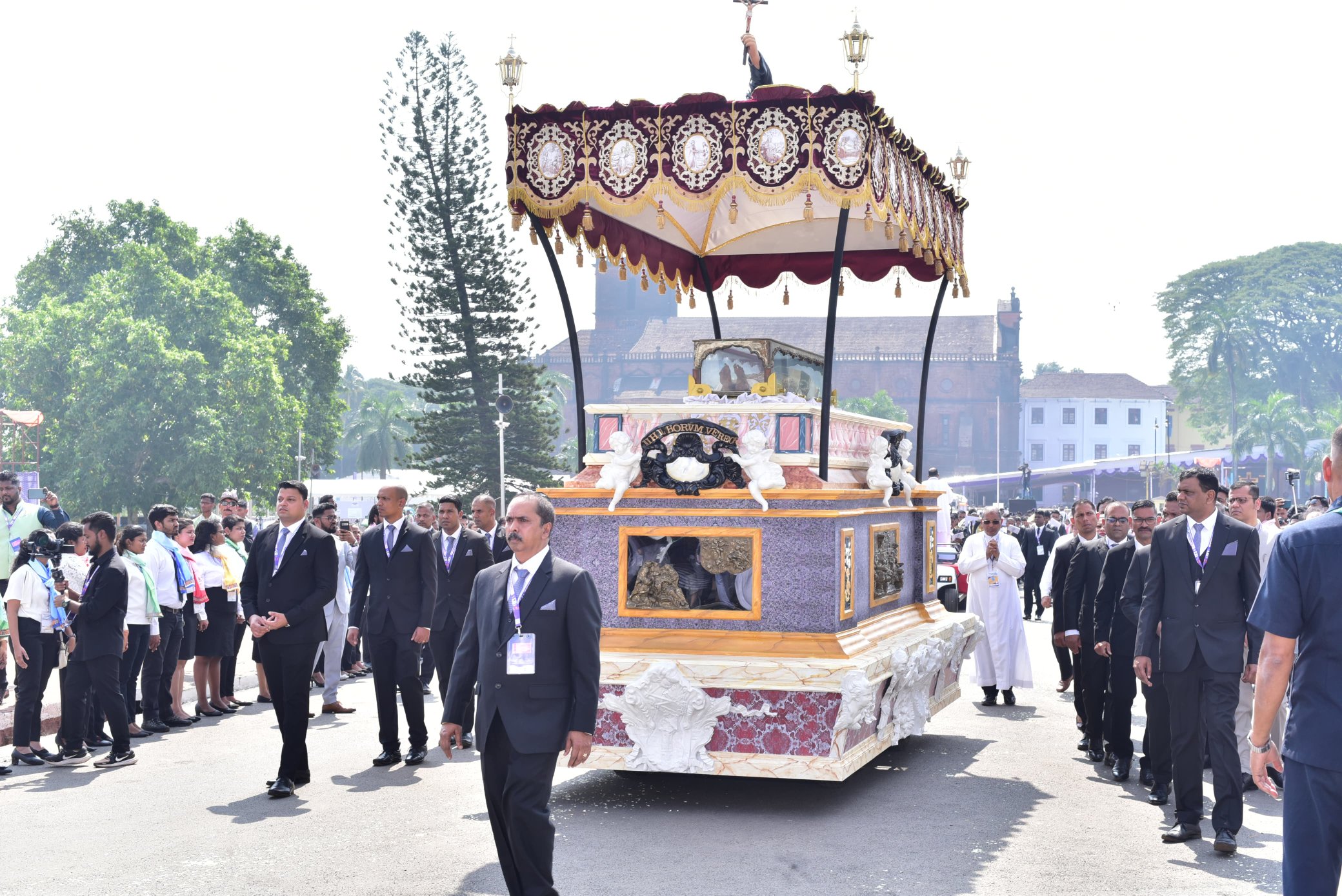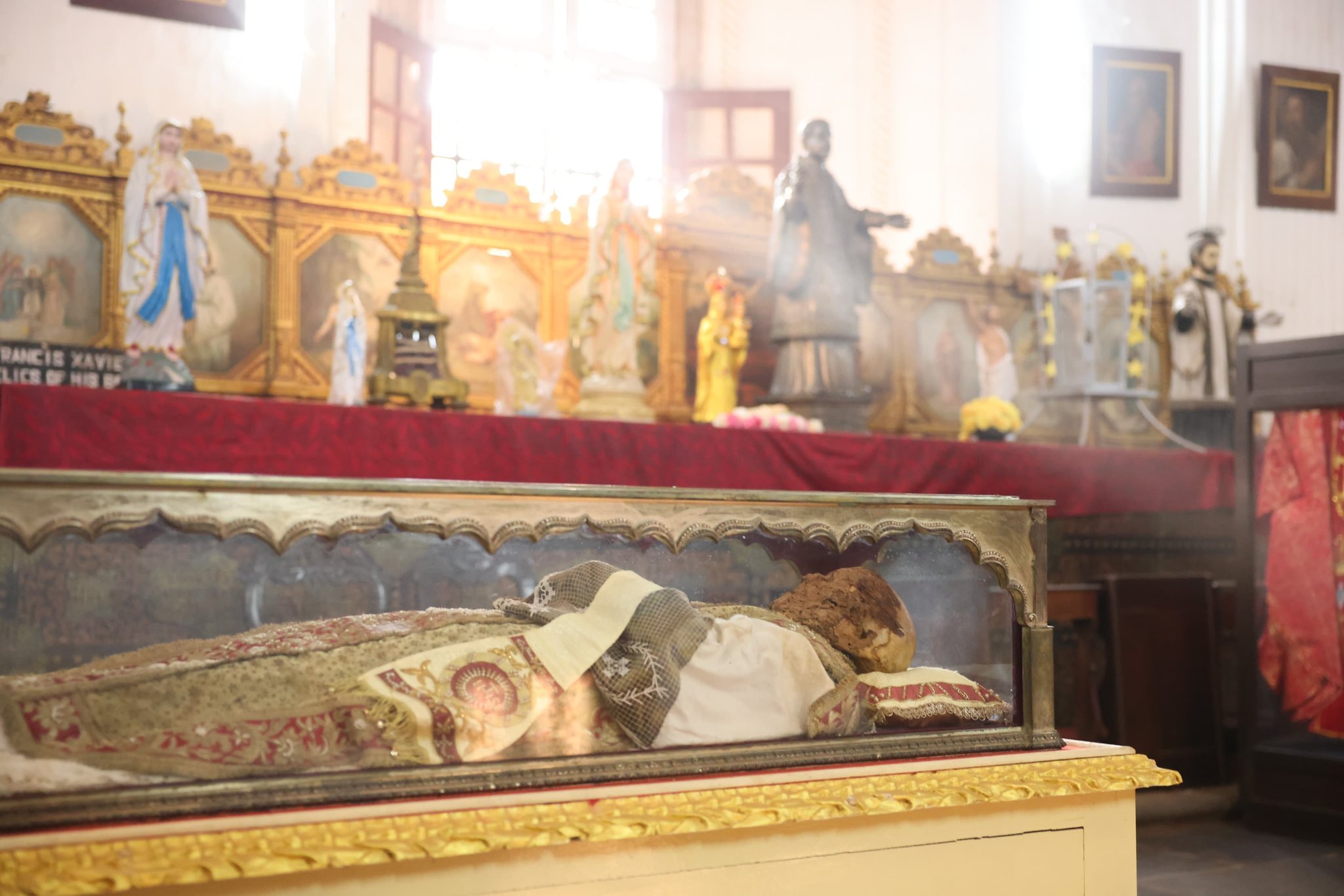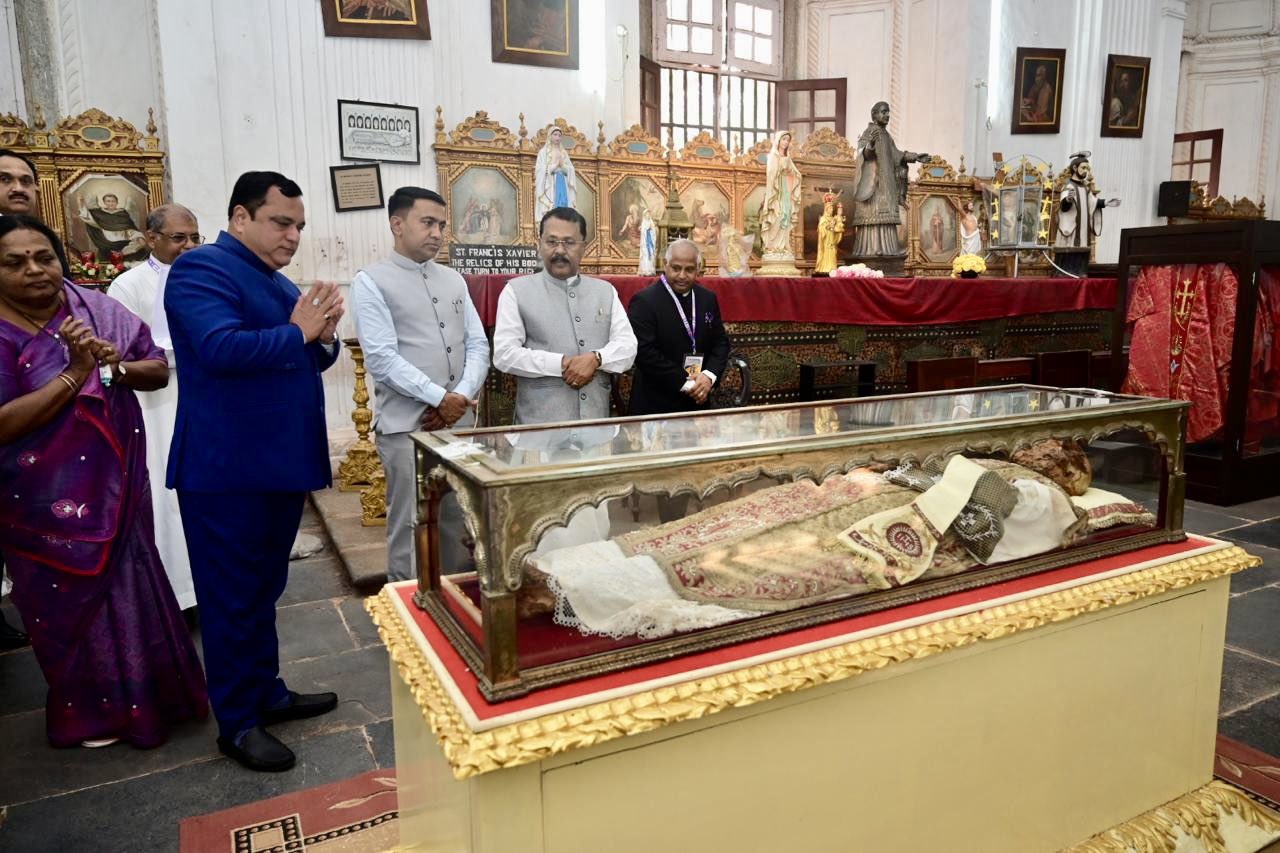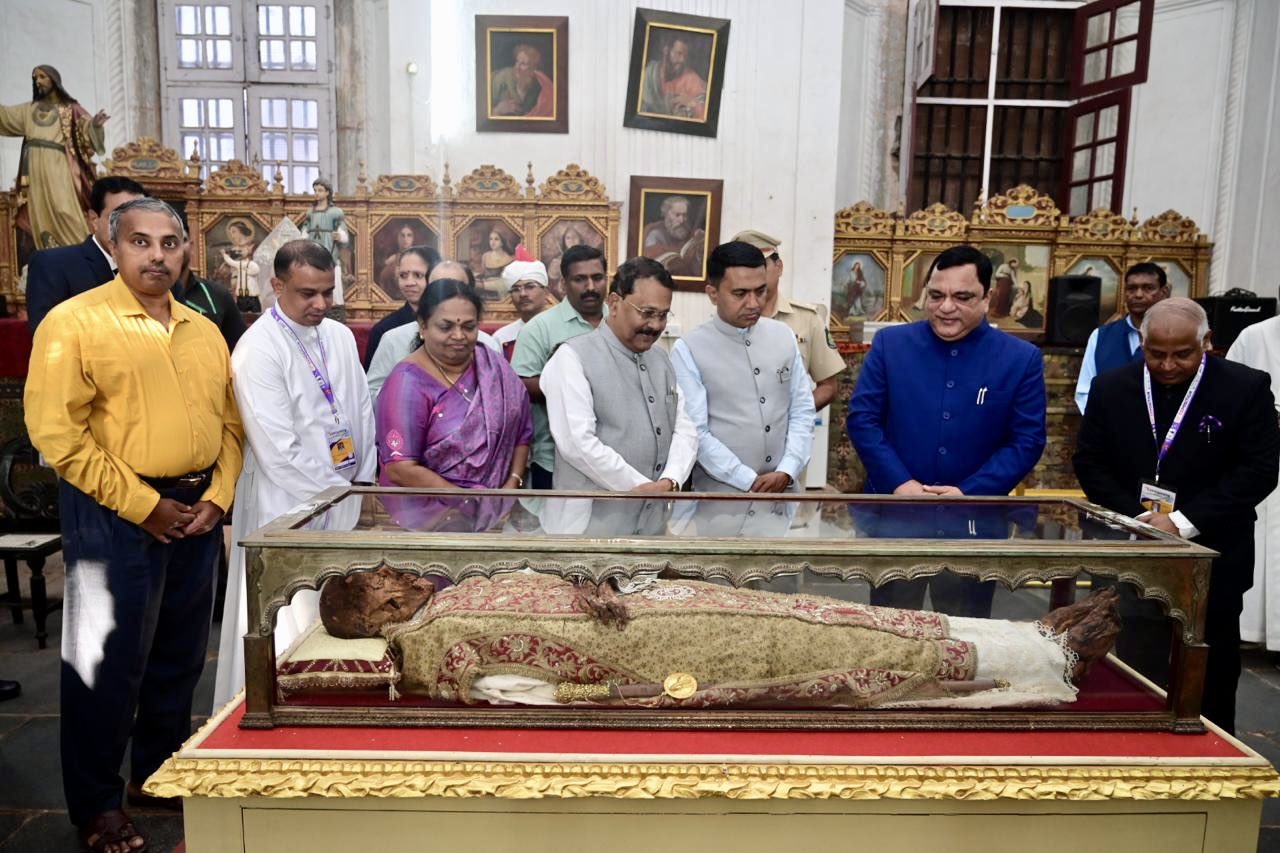(ZENIT News / Goa, 11.22.2024).- On November 21, the historic city of Old Goa came alive with devotion and celebration as the 45-day exposition of St. Francis Xavier’s relics began, marking a decade-long tradition that draws millions of pilgrims to this spiritual haven in southern India. This grand event, deeply entwined with faith and history, honors the Jesuit missionary whose life epitomized unwavering dedication to spreading the Gospel across Asia.
Pilgrimage of the Faithful
For 45 days, until January 5, 2025, the relics of St. Francis Xavier will be on display at Goa’s iconic Cathedral of St. Catherine, after a solemn procession from the Basilica of Bom Jesus. Set against the backdrop of the Universal Church’s Jubilee celebrations, this year’s theme, “We Are Messengers of the Good News,” underscores the timeless relevance of Xavier’s mission.
The exposition began with an inaugural Mass attended by over 40,000 faithful. Presided over by Archbishop Anil Joseph Couto of Delhi and joined by Cardinal Filipe Neri Ferrão of Goa and Daman, along with hundreds of clergy, the liturgy reflected the spirit of unity that Xavier championed during his ministry.
“St. Francis Xavier was a man on a mission, embodying the courage and passion of true discipleship,” Archbishop Couto proclaimed in his homily. His words challenged the faithful to emulate Xavier’s fervor in living and spreading the Gospel.
A Modern-Day Procession
While tradition once saw Xavier’s casket carried by hand, this year’s exposition embraced a contemporary twist with an electric vehicle, blending practicality with reverence. A human chain of 1,000 youth accompanied the procession, symbolizing the enduring vitality of faith among generations.
The event also featured dignitaries, including Goa’s Governor P. S. Sreedharan Pillai and Chief Minister Pramod Sawant, who paid homage to the relics, reflecting the deep cultural and spiritual significance of this Jesuit saint for the region.
Preparing for Millions
Anticipating nearly eight million pilgrims, the government of Goa erected 33 shelters to accommodate visitors, offering space for hundreds daily. Over 700 police officers have been deployed to ensure safety and manage traffic, highlighting the meticulous planning behind an event of this scale.
Devotional services, including daily Masses in Konkani and English, provide pilgrims with opportunities to connect spiritually, as they venerate the saint affectionately called “Gõycho Saib”—the Patron of Goa.
A Saint of Global Impact
Born into Spanish nobility in 1506, St. Francis Xavier’s journey from reluctant follower to fervent missionary stands as a testament to the transformative power of faith. Encouraged by his university friend St. Ignatius of Loyola, Xavier joined the Society of Jesus, dedicating his life to evangelization.
In India, he preached tirelessly, living humbly among the people and teaching children the tenets of Christianity. His mission extended to Japan, where he nurtured the first Catholic communities, and finally toward China, where he succumbed to illness on Shangchuan Island in 1552.
The miracles associated with Xavier’s relics have only deepened his legacy. His body, exhumed a year after burial, was found incorrupt, sparking awe and reverence. Over the centuries, parts of his body were distributed as relics—his right arm resides in Rome, and even a toe, famously bitten off by a fervent devotee, is enshrined in Goa.
With millions expected to honor the saint, the exposition is more than an event—it is a spiritual renaissance, rekindling the flame of faith across generations and continents.
Thank you for reading our content. If you would like to receive ZENIT’s daily e-mail news, you can subscribe for free through this link.


